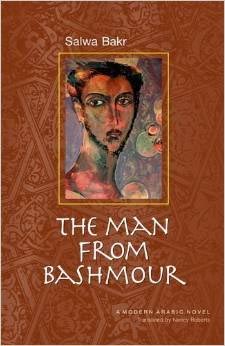By Rebecca Joubin
The Man From Bashmour
By Salwa Bakr, translated by Nancy Roberts
Cairo University Press, 2007
“I was still kneading the dough for the Eucharist break, working on getting it just right, with the intention of leaving it after that to rise. I had washed the earthenware kneading bowl in ritually pure water, as well as the lid and the sieve. The priest was standing over me, reciting the Psalms and making the sign of the cross.”
From the opening line of “The Man from Bashmour,” we see great effort on the part of noted Egyptian novelist Salwa Bakr to enter into the Coptic culture, understand its religious rituals and traditions as if her own. Indeed, Salwa Bakr embarked on this project as a way to underscore the spiritual and practical similarities in Muslim and Coptic religious and cultural practice. Though a Muslim herself, she aspired to offer an objective reading of Muslim-Coptic history. However, when the novel was originally published in 1998, it met with a wave of mixed response in Egypt, with some accusing her of stirring up sectarian conflict between Muslims and Copts. However, many came to her defense, lauding the novel as an important historical document providing a re-examination of early medieval history that had previously received no attention.
The story, which is based on historical events, takes place in 9th century Egypt, when an Arab Muslim elite ruled over Coptic-speaking Christians, who formed the majority of the country. When a peasant revolt is sparked by a land tax, the mission of Budayr, “a good-hearted servant,” is sent off to convince the rebels to stop fighting. Dispatched to the Basshmourites’ territory by Father Joseph, he soon becomes embroiled in a series of events that lead him to a new and unforeseeable path, opening his eyes to values shared by Muslims and Coptics alike.
The original novel in Arabic contains six languages: ancient Egyptian, Coptic, Syriac, Greek, Farsi and Arabic, and is based on an extensive bibliography of historical books such as Adam Metz’s “Tarikh al-Hadara al-Islamiya,” Al-Tabari’s “Tarikh al-Tabari” and Banub Habashi’s “Misr al-Qibtiya,” from both the Coptic and Muslim perspective. Exhaustive in historical and linguistic approach, this highly academic historical novel could prove to be a challenge to the most adept of translators. However, the smooth and beautiful translation by Nancy Roberts shows tremendous effort and loyalty to the original novel. Her effort to render this difficult Arabic text into clear and eloquent English prose is indeed a feat to be applauded.
This article appeared in Al Jadid Magazine, Vol. 16, No. 62, 2010.
Copyright © 2010 AL JADID MAGAZINE

